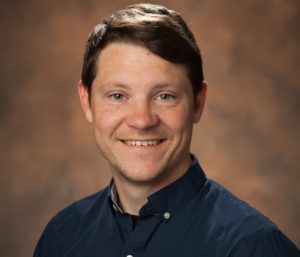Nathan Haag, Ph.D.
Nathan Haag, Ph.D.
Educational Background
Université Laval, Canada
Department of Biology
On Teaching
As the son of German language teacher, I have always had an interest in communication, and as an aquatic ecologist, I strive to understand marine and freshwater animals and ecosystems. My ultimate goal is to combine these two passions, and pass on what I have learned to future scientists through not just lectures, but also discussions. Mutual communication is key to making material relatable, intuitive, and memorable.In addition, I am strongly driven by a desire to get students to develop their own questions and then pushing them in the right direction to find answers. As a PhD student, I advised an undergraduate student interested in agriculture through the successful defense of her thesis on response of invasive mussels to commercial fertilizers. I was also selected to teach a limnology field course in which I worked with students to collect and identify freshwater macrofauna, from mussels to insect larvae and other zooplanktonic species. In both of these roles my goal was to work with the students as a colleague, so that I could gently guide them while they built their own understanding of the topic. In teaching at the SSMV, my goal is to continue acting as a resource for budding scientists so that they can achieve and exceed their own goals.
Research
During my time in academia, I have studied both marine and freshwater invertebrates. My undergraduate and masters theses focused on sea urchins from both the east (Strongylocentrotus droebachiensis) and west coasts (Strongylocentrotus purpuratus) of the U.S. and my PhD dissertation examines the invasive zebra (Dreissena polymorpha) and quagga mussels (Dreissena bugensis). Across all these species, my primary interest has been species’ ability to reallocate energy among expenditures such as reproduction, defense, and attachment when presented with environmental demands such as wave shock and changing microhabitat conditions. My work with zebra and quagga mussels also examines how these two pest species compete with each other for space and resources. While both species are detrimental to their new ecosystems, it is important to examine how two invaders impact each other in order to better understand their combined impact on native species and economies.
Publications
- Haag N, Russel MP, Hernandez JC. 2016. Effects of spine damage and microhabitat on resource allocation of the purple sea urchin Strongylocentrotus purpuratus (Stimpson 1857). J. Exp. Mar. Biol. Ecol. 482: 106-117. DOI
- Haag N, Russel MP, Hernandez JC, Dollahon N. 2013. Assessing fluorochrome-staining efficacy in the green sea urchin, Strongylocentrotus droebachiensis (Müller). Cahiers de Biologie Marine 54: 625-631. PDF
CONNECT WITH SSMV
